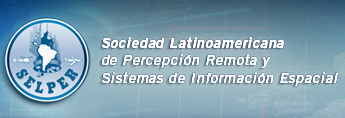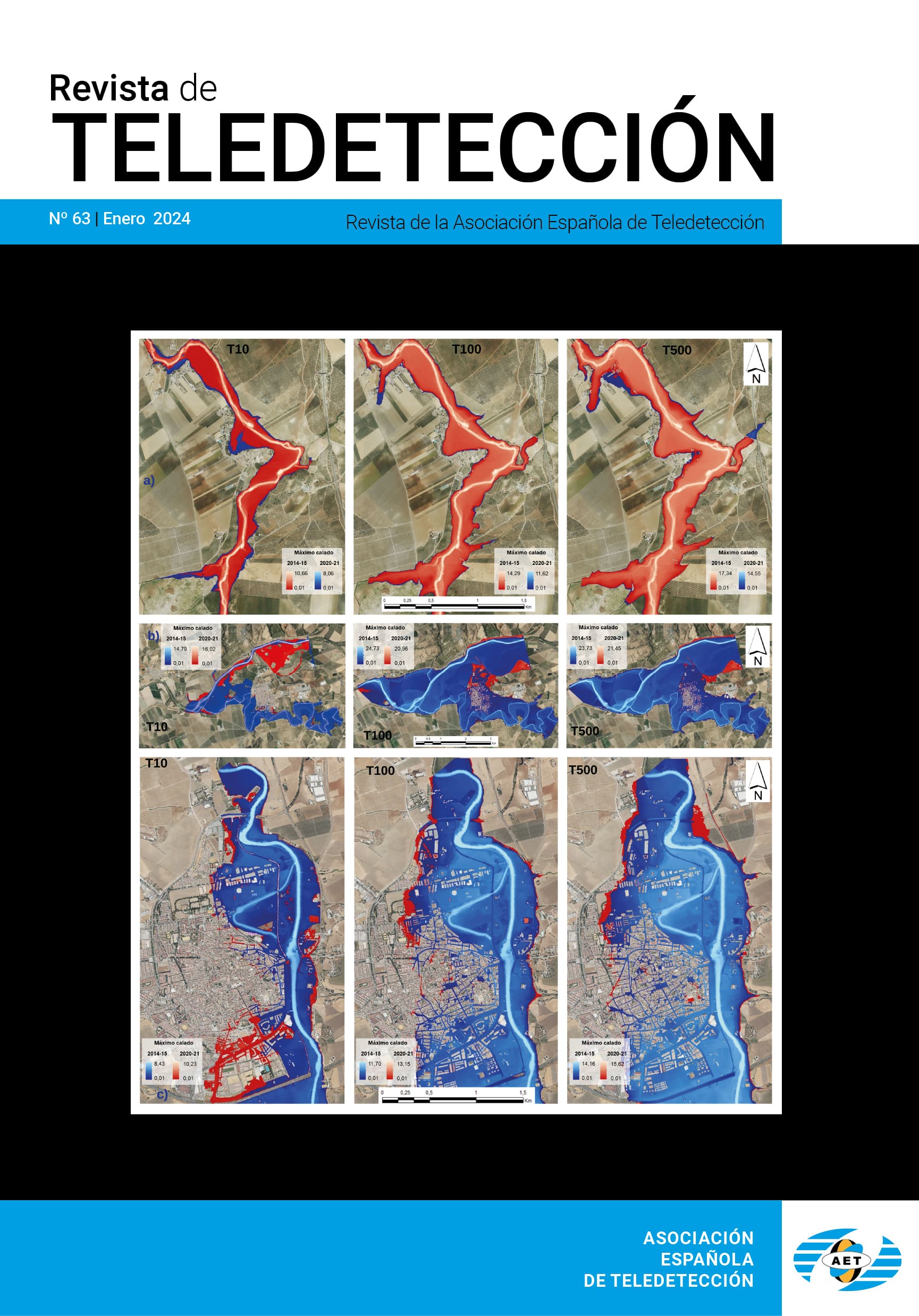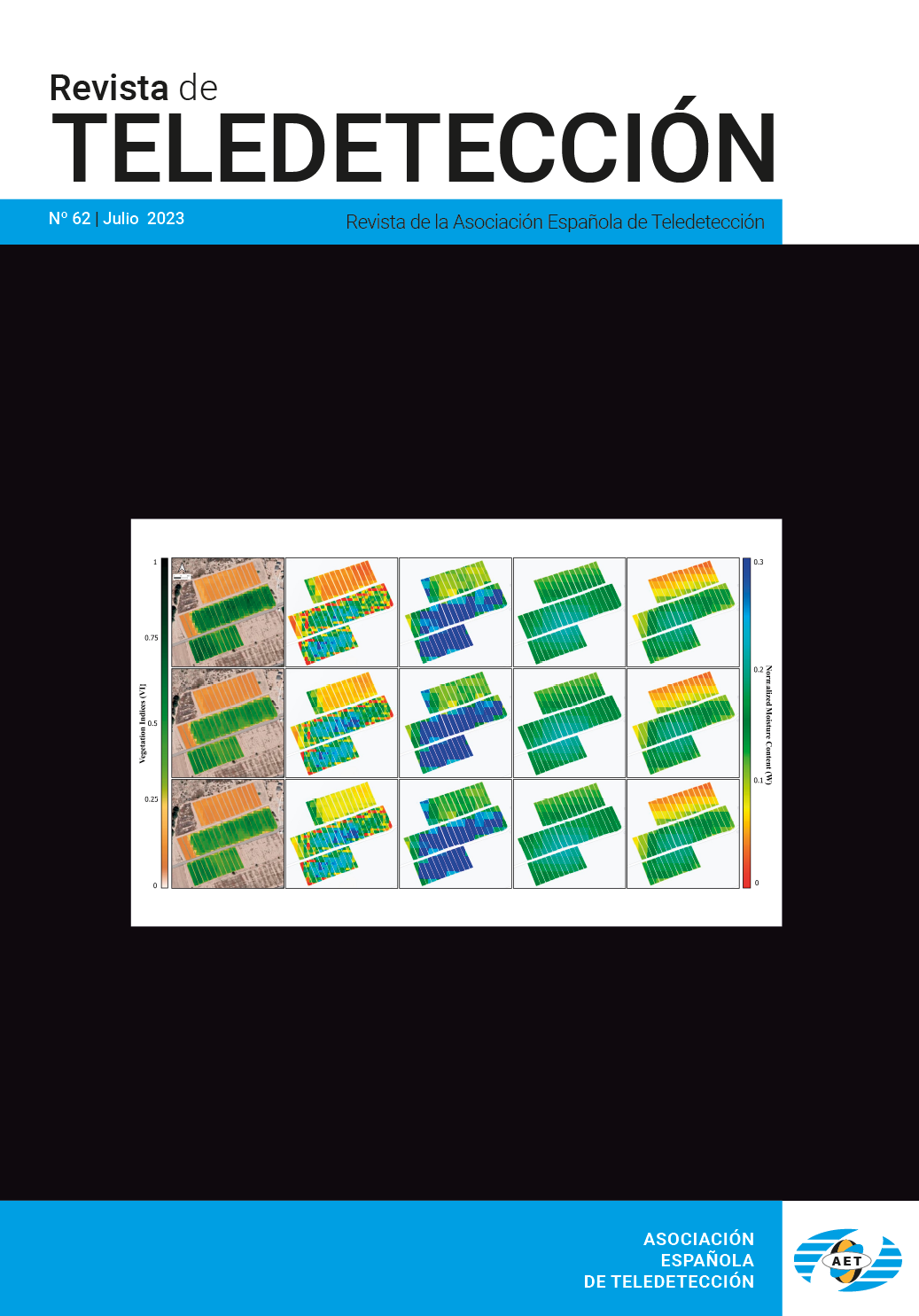COMPARACIÓN DE MODELOS EMPÍRICOS Y DE TRANSFERENCIA RADIATIVA PARA ESTIMAR CONTENIDO DE HUMEDAD EN PASTIZALES: PODER DE GENERALI
M. Yebra, E. Chuvieco y I. Aguado
RESUMEN
El contenido de humedad de la vegetación (FMC) es una variable clave de diversas aplicaciones, muchas de las cuales precisan un conocimiento a nivel global. Por ello, se precisa calibrar modelos de estimación del FMC con alta representatividad espacial y poder de generalización. La teledetección espacial se muestra como una de las fuentes de información más idónea al respecto. Existen principalmente dos tipos de modelos que relacionan información extraída de imágenes satélite con el FMC: empíricos y teóricos. Los primeros son muy dependientes de los datos usados en la calibración y las condiciones bajo las cuales se tomaron, por lo que tienen escaso poder de generalización. Los teóricos, tienen una fuerte base física (generalmente la teoría de transferencia radiativa, de ahí que se denominen modelos de transferencia radiativa, RTM) por lo que permiten aplicarse a muy diversas condiciones. Sin embargo, para obtener estimaciones precisa, estos modelos deben ser adecuadamente parametrizados con datos de campo y considerar información auxiliar, lo que podría comprometer su potencial de generalización. El objetivo de este trabajo es comparar el modelo empírico y el RTM propuesto por Yebra et al. (2008) en términos de poder de generalización. Para ello, se han empleado una muestra de validación compuesta por 92 observaciones de FMC y datos radiométricos tomados por el sensor MODIS, correspondientes a seis zonas de validación (dos en España y cuatro en Australia). Los resultados obtenidos muestran que cuando los modelos se aplica a pastizales similares a los de la zona de calibrado, las precisiones del modelo empírico y RTM son similares (RMSE=41,39 y 43,44% frente 38,23 y 33,83%, para el modelo empírico y RTM, respectivamente). Sin embargo, cuando dichos modelos se aplican a zonas con pastizales de diferentes características o a periodos del año diferentes, el RTM supera en precisión al modelo empírico (RMSE=38,93 y 61,66% frente 11,27 y 19,37%, para el modelo empírico y RTM, respectivamente), lo que demuestra el mayor poder de generalización del RTM.
PALABRAS CLAVE: Contenido en agua, FMC, Modelos empíricos, Modelos de transferencia radiativa, Teledetección.
ABSTRACT
Vegetation water content (FMC) is a key variable in several applications, many of which require a global knowledge. Because of that, the calibration of highly generalizing power models to estimate that variable is required. Remote sensing is one of the sources of information more suitable in that respect. There exist mainly two kinds of models who relate remote sensed data to FMC: empirical and theoretical. The empirical models are highly dependent of the data used in the calibration phase and the conditions under which those data were taken. Therefore, these models have low generalizing power. The RTM have a strong physic (generally the radiative transfer theory, that is why they are so-called Radiative Transfer Models, RTM) so they can be applied to more diverse conditions. However, if accurate estimations want to be obtained, they must be properly parameterizated with field data and include auxiliary information, what may affect their generalizing potential. The objective of this paper is to compare the performance of the empirical model and the RTM proposed by Yebra et al. (2008) in terms of generalizing power. For doing that, a validation sample of 92 observations of field measured FMC and their corresponding MODIS data was used. These data correspond to seven grassland plots located in Spain and eight in Australia. The results show that both models offer similar accuracy when applying to grassland with analogous types of vegetation to the calibration site (RMSE=41.39 y 43.44% against 38.23 and 33.83%, empirical and RTM, respectively). Nevertheless, the RTM offer greater accuracy than the empirical when the models are applied to grassland with different characteristic to those of the calibration site (RMSE=38.93 y 61.66% against 11.27 y 19.37%, empirical and RTM, respectively), what support that the RTM have more generalizing power.
KEYWORDS: Water content, FMC, Empirical models, Radiative Transfer Models, Remote sensing.
PULSE AQUI PARA DESCARGAR EL ARTÍCULO COMPLETO.




















